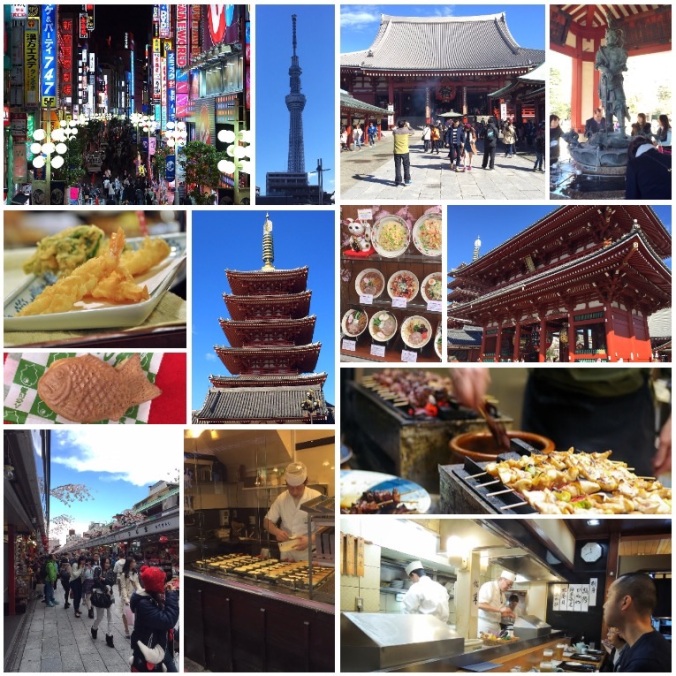Upon my return to Tokyo I decided it was time to indulge my inner-otaku (or geek). Having spent so much time luxuriating in the rich history of Japan I decided to spend some time focusing on the nerdier aspects of life in the Japanese capital. My first stop was Akihabara, a hub for all things technological, collectible and animated. Here, being a geek is acceptably mainstream. The area is immensley colourful and hums with the sounds of arcades and pachinko machines. On a sunday, the street is closed to traffic in the afternoon and the local cosplayers come out of the woodwork to show-off their latest intricate outfits. I had a ton of fun hanging out in Akihabara, but in reality my biggest geeky obsession is food.
So the very next day, I went to Tsukiji fish market. I wasnt quite enthusiastic enough to make it there by 4am for the legendary Tuna auction, but I did make it there early enough to enjoy my own sushi breakfast. From there I returned to Chuo to attend a fantastic cookery class with some fellow gaijin.
My favourite recipe was for Soboro Donburi, a simple Washoku (or home-style) dish comprising of very few ingredients – all of them cheap, nutritious, filling and deeply savoury. I have included the recipe below.
Level: low
Methods: frying, boiling
Time: 20 minutes
Makes: serves 2
Ingredients
100g rice
250ml water
200g minced chicken
2tbsp sake
1 1/2tbsp soy sauce
1tbsp sugar
2 eggs
1tsp sugar
1/2tsp MSG (optional)
Chives, cucumber or spring onion for garnish (finely sliced)
Method
1. Place the rice and water in a small saucepan. Stir once.
2. Cover with a tightly fitting lid and bring to the boil.
3. Boil for 8-10 minutes, then remove from the heat and allow to steam with the lid still attached.
4. Meanwhile mix together the sake, soy sauce and sugar.
5. Begin to sauté the chicken mince in a frying pan over a medium heat. Then pour in the sauce ingredients and cook until the liquids have evaporated and been absorbed into the meat.
6. Place in a bowl and sert aside.
7. Using the same pan, add the eggs, sugar and MSG. Whisk together briefly and cook, stirring occassionally, until scrambled.
8. To serve the donburi, place some rice into the bottom of a high sided bowl. Cover half with the chicken and half with the scrambled egg. Use your green vegetable garnish to create a line through the middle of the bowl.









